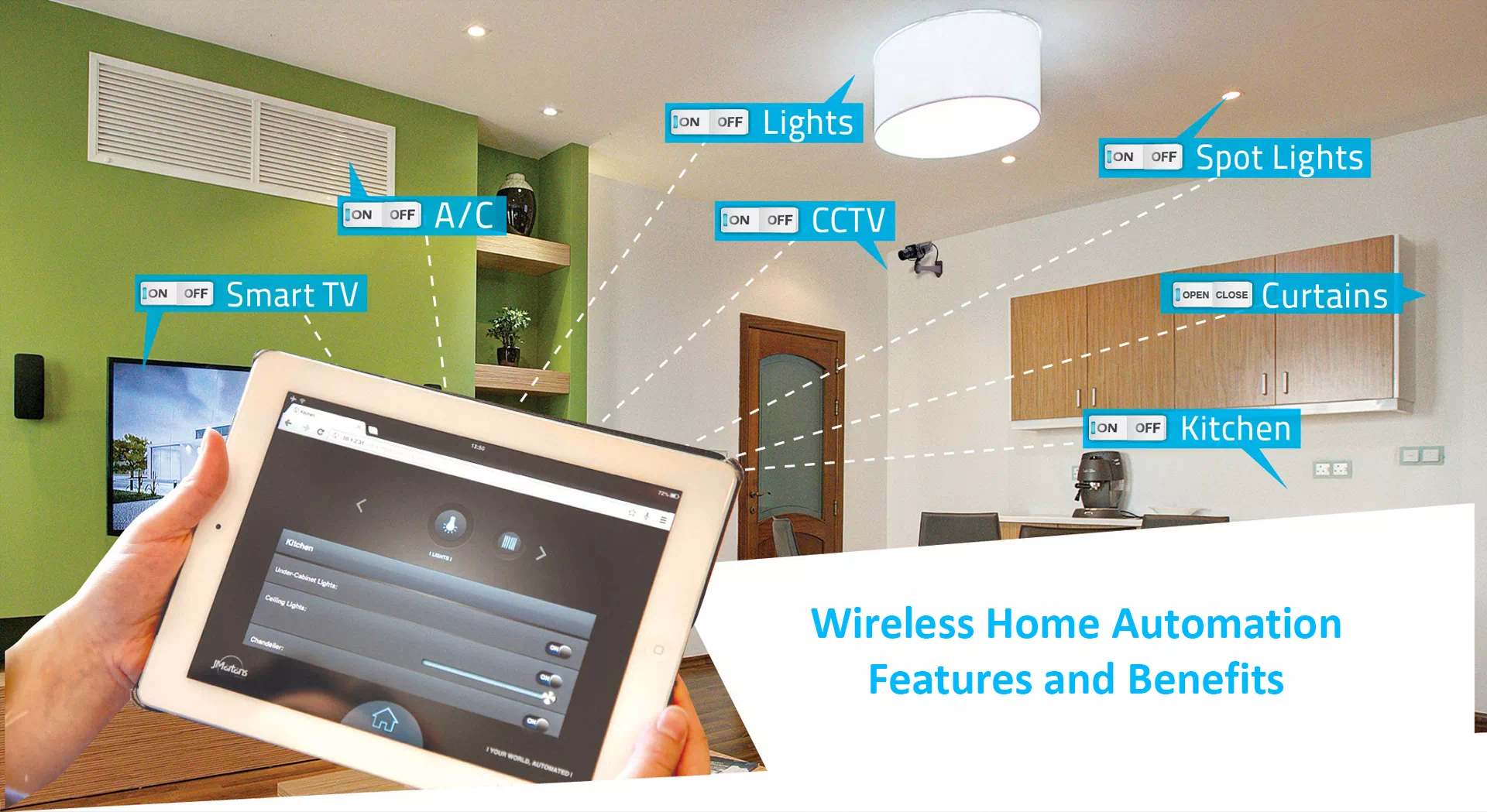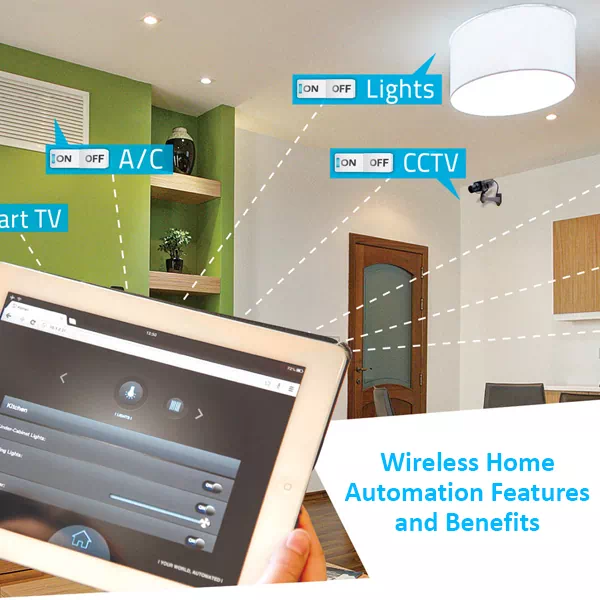Wireless home automation is a new addition to modern-day households. It allows homeowners to control their home appliances remotely through an app or voice assistants such as Amazon Alexa or Google Home. This technology enables homeowners to regulate their homes' temperature, lighting, and security systems easily.
One of the most significant benefits of wireless home automation is convenience. With this technology, you can turn off your lights or adjust the thermostat without leaving your bed or couch. Additionally, it provides increased energy efficiency by allowing users to monitor and manage their energy consumption better.
Another advantage of wireless home automation is enhanced security. With features like smart locks and doorbells, homeowners can oversee who enters and exits their homes remotely. They can also receive alerts when unusual activities occur around their property through sensors placed around the house.
Home automation increases better safety and security
Home automation is a relatively new concept that has grown in popularity over the past few years. With advances in technology, home automation has become more affordable and accessible to homeowners who are looking for better safety and security. One of the main benefits of home automation is the ability to monitor your home when you're away. With wireless cameras and motion sensors, homeowners can keep an eye on their property from anywhere in the world.
Home automation is convenient
Home automation is a convenient way to simplify your daily routine. With wireless home automation, you can control all of your electronic devices from one central hub. This means that you don't have to get up from the couch or leave the room to turn off lights, adjust the temperature, or lock the doors. You can even schedule these actions in advance so that they occur automatically at specific times.
In addition, home automation provides greater security and peace of mind. You can monitor your home remotely using your smartphone or tablet, and receive alerts if there are any unusual activities detected by motion sensors or cameras. This allows you to respond quickly and appropriately in case of an emergency situation.
Home automation offers data and control
Home automation technology has come a long way in recent years, and with it comes the ability to gather valuable data about energy use and home security. With smart thermostats, homeowners can track their energy consumption patterns and adjust their usage accordingly to save money on their utility bills. In addition, integrated security systems allow for real-time monitoring of the home, whether the homeowner is there or away. Data collected by these systems can provide insights into potential safety hazards or unusual activity.
But home automation isn't just about data collection - it also offers unparalleled control over various aspects of a household. From lighting to music to temperature, homeowners have the ability to customize their living environment with ease. For instance, they can set up automated schedules for lights or heating/cooling that adjust based on time of day or occupancy status. This level of convenience not only makes life easier but can also lead to increased peace of mind.
You can remotely control your home functions
Wireless home automation is a technology that enables you to control the functions of your home remotely. With this technology, you can access and manage different features of your home from anywhere, at any time. For instance, you can use your smartphone or tablet to turn off lights, adjust the thermostat, lock doors, and even view live feeds from security cameras.
One of the main benefits of wireless home automation is convenience. It saves time and energy by allowing you to control multiple devices with just one device or application. You don't have to move around the house switching things on and off physically; everything can be done remotely.
User-Friendly Controls
When it comes to wireless home automation, user-friendly controls are crucial in ensuring that the system is easy to use for everyone. With the advancements in technology, controlling your home’s devices has never been easier. A well-designed user interface can make all the difference, and modern devices have taken this aspect seriously.
Having a central hub that controls all your smart devices makes it convenient for homeowners to manage their household appliances without having to interact with each device separately. Moreover, voice-activated assistants such as Google Home or Amazon Echo offer a hands-free solution that allows users to control their smart homes just by speaking commands.
Energy efficiency is increased
Energy efficiency is one of the most important features of wireless home automation. The system allows homeowners to monitor and control energy usage through smart devices such as phones, tablets, and laptops. With real-time data on power consumption, users can make informed decisions on how to reduce energy usage in their homes.
Wireless home automation systems also come with features such as programmable thermostats that allow homeowners to set temperatures based on their schedules. This ensures that heating and cooling systems are only running when needed, reducing energy wastage. In addition, lighting controls enable users to turn off lights remotely or set them to automatically turn off when not in use.
Overall, wireless home automation technology helps households save money on their utility bills while promoting environmental sustainability by reducing carbon footprints. As more people adopt this technology into their homes, it will become easier for everyone to conserve energy and live a more eco-friendly lifestyle.


